Chrysler 2012 Annual Report Download - page 102
Download and view the complete annual report
Please find page 102 of the 2012 Chrysler annual report below. You can navigate through the pages in the report by either clicking on the pages listed below, or by using the keyword search tool below to find specific information within the annual report.-
 1
1 -
 2
2 -
 3
3 -
 4
4 -
 5
5 -
 6
6 -
 7
7 -
 8
8 -
 9
9 -
 10
10 -
 11
11 -
 12
12 -
 13
13 -
 14
14 -
 15
15 -
 16
16 -
 17
17 -
 18
18 -
 19
19 -
 20
20 -
 21
21 -
 22
22 -
 23
23 -
 24
24 -
 25
25 -
 26
26 -
 27
27 -
 28
28 -
 29
29 -
 30
30 -
 31
31 -
 32
32 -
 33
33 -
 34
34 -
 35
35 -
 36
36 -
 37
37 -
 38
38 -
 39
39 -
 40
40 -
 41
41 -
 42
42 -
 43
43 -
 44
44 -
 45
45 -
 46
46 -
 47
47 -
 48
48 -
 49
49 -
 50
50 -
 51
51 -
 52
52 -
 53
53 -
 54
54 -
 55
55 -
 56
56 -
 57
57 -
 58
58 -
 59
59 -
 60
60 -
 61
61 -
 62
62 -
 63
63 -
 64
64 -
 65
65 -
 66
66 -
 67
67 -
 68
68 -
 69
69 -
 70
70 -
 71
71 -
 72
72 -
 73
73 -
 74
74 -
 75
75 -
 76
76 -
 77
77 -
 78
78 -
 79
79 -
 80
80 -
 81
81 -
 82
82 -
 83
83 -
 84
84 -
 85
85 -
 86
86 -
 87
87 -
 88
88 -
 89
89 -
 90
90 -
 91
91 -
 92
92 -
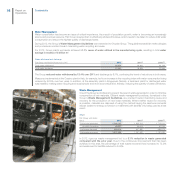 93
93 -
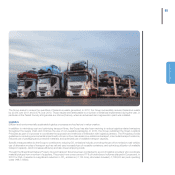 94
94 -
 95
95 -
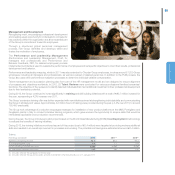 96
96 -
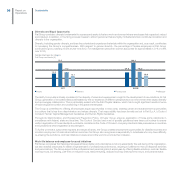 97
97 -
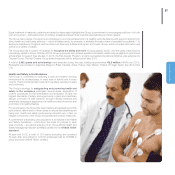 98
98 -
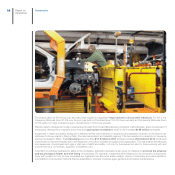 99
99 -
 100
100 -
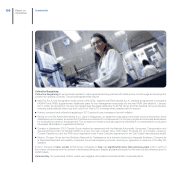 101
101 -
 102
102 -
 103
103 -
 104
104 -
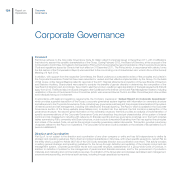 105
105 -
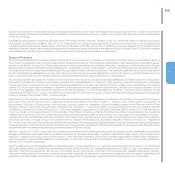 106
106 -
 107
107 -
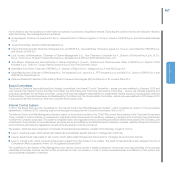 108
108 -
 109
109 -
 110
110 -
 111
111 -
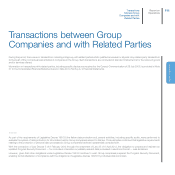 112
112 -
 113
113 -
 114
114 -
 115
115 -
 116
116 -
 117
117 -
 118
118 -
 119
119 -
 120
120 -
 121
121 -
 122
122 -
 123
123 -
 124
124 -
 125
125 -
 126
126 -
 127
127 -
 128
128 -
 129
129 -
 130
130 -
 131
131 -
 132
132 -
 133
133 -
 134
134 -
 135
135 -
 136
136 -
 137
137 -
 138
138 -
 139
139 -
 140
140 -
 141
141 -
 142
142 -
 143
143 -
 144
144 -
 145
145 -
 146
146 -
 147
147 -
 148
148 -
 149
149 -
 150
150 -
 151
151 -
 152
152 -
 153
153 -
 154
154 -
 155
155 -
 156
156 -
 157
157 -
 158
158 -
 159
159 -
 160
160 -
 161
161 -
 162
162 -
 163
163 -
 164
164 -
 165
165 -
 166
166 -
 167
167 -
 168
168 -
 169
169 -
 170
170 -
 171
171 -
 172
172 -
 173
173 -
 174
174 -
 175
175 -
 176
176 -
 177
177 -
 178
178 -
 179
179 -
 180
180 -
 181
181 -
 182
182 -
 183
183 -
 184
184 -
 185
185 -
 186
186 -
 187
187 -
 188
188 -
 189
189 -
 190
190 -
 191
191 -
 192
192 -
 193
193 -
 194
194 -
 195
195 -
 196
196 -
 197
197 -
 198
198 -
 199
199 -
 200
200 -
 201
201 -
 202
202 -
 203
203 -
 204
204 -
 205
205 -
 206
206 -
 207
207 -
 208
208 -
 209
209 -
 210
210 -
 211
211 -
 212
212 -
 213
213 -
 214
214 -
 215
215 -
 216
216 -
 217
217 -
 218
218 -
 219
219 -
 220
220 -
 221
221 -
 222
222 -
 223
223 -
 224
224 -
 225
225 -
 226
226 -
 227
227 -
 228
228 -
 229
229 -
 230
230 -
 231
231 -
 232
232 -
 233
233 -
 234
234 -
 235
235 -
 236
236 -
 237
237 -
 238
238 -
 239
239 -
 240
240 -
 241
241 -
 242
242 -
 243
243 -
 244
244 -
 245
245 -
 246
246 -
 247
247 -
 248
248 -
 249
249 -
 250
250 -
 251
251 -
 252
252 -
 253
253 -
 254
254 -
 255
255 -
 256
256 -
 257
257 -
 258
258 -
 259
259 -
 260
260 -
 261
261 -
 262
262 -
 263
263 -
 264
264 -
 265
265 -
 266
266 -
 267
267 -
 268
268 -
 269
269 -
 270
270 -
 271
271 -
 272
272 -
 273
273 -
 274
274 -
 275
275 -
 276
276 -
 277
277 -
 278
278 -
 279
279 -
 280
280 -
 281
281 -
 282
282 -
 283
283 -
 284
284 -
 285
285 -
 286
286 -
 287
287 -
 288
288 -
 289
289 -
 290
290 -
 291
291 -
 292
292 -
 293
293 -
 294
294 -
 295
295 -
 296
296 -
 297
297 -
 298
298 -
 299
299 -
 300
300 -
 301
301 -
 302
302 -
 303
303 -
 304
304 -
 305
305 -
 306
306 -
 307
307 -
 308
308 -
 309
309 -
 310
310 -
 311
311 -
 312
312 -
 313
313 -
 314
314 -
 315
315 -
 316
316 -
 317
317 -
 318
318 -
 319
319 -
 320
320 -
 321
321 -
 322
322 -
 323
323 -
 324
324 -
 325
325 -
 326
326 -
 327
327 -
 328
328 -
 329
329 -
 330
330 -
 331
331 -
 332
332 -
 333
333 -
 334
334 -
 335
335 -
 336
336 -
 337
337 -
 338
338 -
 339
339 -
 340
340 -
 341
341 -
 342
342 -
 343
343 -
 344
344 -
 345
345 -
 346
346
 |
 |

101
Report on Operations
Management of Production Levels
During 2012, auto markets in both North and South America showed significant signs of improvement. In Europe, by contrast, demand
contracted for the fifth consecutive year with particularly negative consequences for Fiat Group manufacturing activities in Italy.
In Brazil, the Group made use of overtime and also reached an agreement with trade unions to establish shift rotas that were adequate
to meet the needs of certain production areas.
For Chrysler Group, vehicle production continued to expand in 2012 in response to strong customer demand and in line with the
2010–2014 Business Plan announced in 2009. The increase was facilitated by the implementation of additional shifts at the Belvidere
and Jefferson North assembly plants in the U.S., as well as increases in production rates and overtime hours at most manufacturing
facilities. Correspondingly, the Chrysler Group hourly workforce across North America also increased by more than 6,000 employees
compared with the previous year.
With the exception of Italy, there was a year-over-year decrease in production stoppages – implemented through the use of temporary
benefit schemes, where possible, or mechanisms established through collective bargaining or company policies – as well as in the level
of restructuring and reorganizations.
In Italy, extensive use of temporary layoff benefit schemes enabled the Group to manage production declines and to undertake
restructuring and reorganization activities related to investment in new production without resorting to permanent redundancies.
The persisting crisis in the European auto market resulted in a realignment of production levels in Poland. During the year, Fiat Group
companies in Poland continued to use flexibility schemes initiated in 2011. The significant drop in production volumes associated
with the negative trading conditions and outlook had a direct impact on the Fiat Auto Poland plant in Tychy, where in 2013 it will be
necessary to scale back from three to two shifts and realign the distribution network to current demand levels. This resulted in the
announcement of 1,450 redundancies and the Group reached an agreement with trade unions on December 20th that established the
conditions for selecting which employees would be affected, in addition to determining incentives for voluntary redundancy that vary
based on years of service.
In other European countries, there were no significant restructurings or reorganizations and no significant production stoppages were
required.
Suppliers
Suppliers make an important contribution to the strategic development and
competitiveness of the business. Fiat Group maintains a continuous and active
dialogue with suppliers to ensure a strong, mutually beneficial partnership. The
Group actively promotes responsible behavior and sustainable development
throughout the supply chain and seeks to establish long-term relationships with
suppliers who meet the highest standards in quality, price and reliability, as well
as sharing the Group’s values and approach to sustainability.
Group Purchasing, which oversees purchasing activities for the Group worldwide,
managed approximately €44 billion in purchases in 2012 through a supplier base
of approximately 2,700 companies.
The process for screening, selecting and managing suppliers is based on objective
assessment criteria that ensure impartial treatment and equal opportunity.
To ensure the selection of suppliers is aligned with the Group’s sustainability
policies, the procedures also require verification that prospective suppliers
conform to specific standards for environmental and social sustainability. New
contracts with suppliers contain clauses requiring adherence to the Fiat Group
Code of Conduct and specific Sustainability Guidelines relating to human rights and
working conditions, respect for the environment and ethical business practices.
